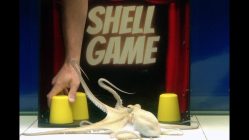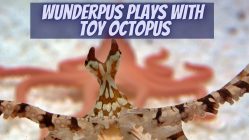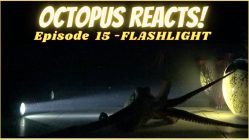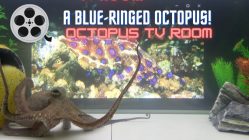
There are over 300 species of octopus species. It is, therefore, reasonable to expect that they will come in a variety of sizes. The wolfi octopus exemplifies the smallest known octopus species.
Being the smallest doesn’t marginalize the interest that people have for this octopus. If anything, it raises the curiosity factor over it.
Wolfi Octopus Facts
- Scientific Name : Wolfi Octopus
- Common Name: Star-sucker Pigmy Octopus
- Size: 2,5 cm (1 in)
- Weight: 1 gram (o,o4 ounces)
- Lifespan: average 1 years
- Found in: Western Pacific ocean
- Sub-Order: Incirrina
- Discovered: 1913
- Scientific Name : Wolfi Octopus
- Common Name: Star-sucker Pygmy Octopus
- Size: 2,5 cm (1 in)
- Weight: 1 gram (o,o4 ounces)
- Lifespan: average 1 years
- Found in: Western Pacific ocean
- Sub-Order: Incirrina
- Discovered: 1913
When we say that the wolfi octopus is the smallest octopus species we are not kidding around. This little fellow rarely measures over one inch in length when fully grown.
—Basic Facts About the Wolfi Octopus—
Size

When we say that the wolfi octopus is the smallest octopus species we are not kidding around. This little fellow rarely measures over one inch in length when fully grown.
In terms of weight, an adult specimen will top off the scales off at 0.04 ounces. That is approximately one gram.
To give you further perspective on how light that is, it is equivalent to two microSD cards. Yes, those little black memory cards that you use in your cell phone. Imagine two of those sitting in the palm of your hand and that is roughly how much the largest Wolfi octopus would weigh. For most of you, you would barely notice the weight.
Where Does the Wolfi Octopus Live?

In spite of its relatively small size, the wolfi octopus is a thriving and successful species. Its distribution is wide.
You can find wolfi octopuses throughout the Western Pacific Ocean. More accurately this would be described as the indo-pacific. Specimens of the Wolfi octopus have been found from the Red Sea to regions near Tahiti.
The wolfi octopus does not stray too far from the coastline. It is a species that prefers shallower depths of water. You can find wolfi octopuses at depths of just a few feet to 90 feet.
Proliferation

Marine biologists do not have estimates as to the size of the wolfi population in the wild. This is due to the wide range of distribution of the species and the fact that it is a solitary creature that does not congregate en-mass.
The wolfi octopus is considered to be a species that is not in danger of extinction. It is usually classified under the category of “least concern” or “secure” by the International for Conservation of Nature.
The apparent robustness of the wolfi octopus, even though it lives so close to the coast and is, therefore, accessible to a wide variety of potential predators, including humans, is attributed to its small size. There is no market for it as a seafood octopus. When actively caught by humans it is usually for the pet and aquarium trade.
Multiple Egg-Laying Rounds

The wolfi octopus has been observed to have the capability to lay multiple clutches of eggs. A clutch is a batch of eggs laid by the female and fertilized by sperm from the sperm packet which a male inserted in her mantle earlier.
The majority of other octopus species only lay one clutch and after brooding is over the female dies. Wolfi octopus females have been observed to lay two, sometimes three clutches subsequent to each other.
In other words, the female wolfi octopus lays one clutch of eggs, broods over them until they hatch and then immediately lays a subsequent clutch.
Unfortunately, following the hatching of the second or third clutch, the female wolfi octopus, like the mother octopuses of other species, soon dies.
Being able to lay multiple clutches of eggs is cited as being another reason why the wolfi octopus is considered to be a “secure” species in terms of conservation.
—Wolfi Octopuses in Aquariums—
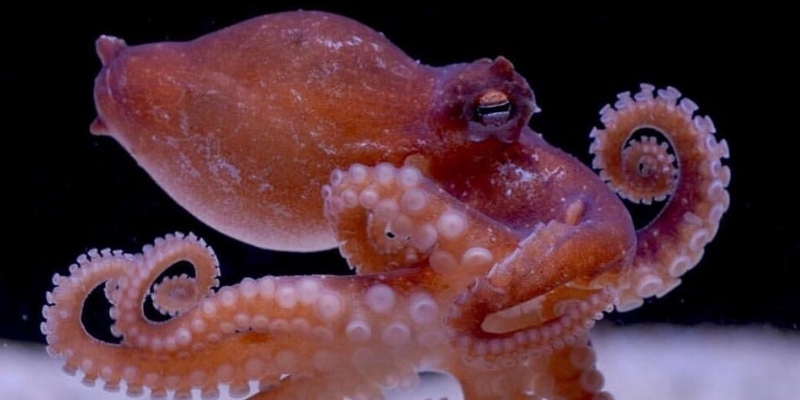
Being such a small and abundant species, the wolfi octopus is popular with those who want an octopus as a pet.
While keeping any species of octopus in a home aquarium has several challenges to overcome, keeping a wolfi octopus has some unique ones.
1- Due to its incredibly small size, the aquarium must be secured. This means that full “lock-down” mode must be in place. If you have heard stories of larger octopus species being able to finesse their way out of aquariums through the smallest of openings, imagine what a one-inch wonder could do.
2- Special care must be taken with the selection and settings of aeration and filtration equipment. While you want to keep the water in the aquarium well aerated to maximize oxygenation, you need to be mindful of the risk posed by large air bubbles.
Since the wolfi octopus is so tiny, there have been cases when air bubbles have made their way into the mantle of the wolfi and become trapped there. In the worst-case scenarios, the presence of the air bubble displaces water in the interior of the mantle. This stifles the capacity of the gills to extract oxygen from the water. In turn, the poor wolfi dies from deprivation of oxygen.
3- Again, being so small, the wolfi ocotpus is more susceptible to wide ranges in water temperature and overall water condition. These little guys need consistency in temperature and water quality to remain healthy.
—What Do Wolfi Octopuses Eat?—

Even though the wolfi octopus is rarely over an inch in length, it is still an octopus. This means that it is a predator. Wolfis eat other animals. No vegan stuff for them.
At such a small size, however, you are not going to find a wolfi octopus taking on a large lobster or a small shark as other octopus species sometimes do.
The wolfi octopus is content with small crustaceans and mollusks.
When they are hatchlings, wolfi octopuses feed primarily on nanoplankton. These are the microscopic-end of the spectrum for plankton. Nanoplankton populations fluctuate at different times of the year across the wide habitat of the wolfi octopus. It has been observed that females lay eggs to coincide with this nanoplankton cycle.
As the hatchlings grow in size, they eventually move on to krill as the mainstay of their diet.
—Extended Paralarval Stage—
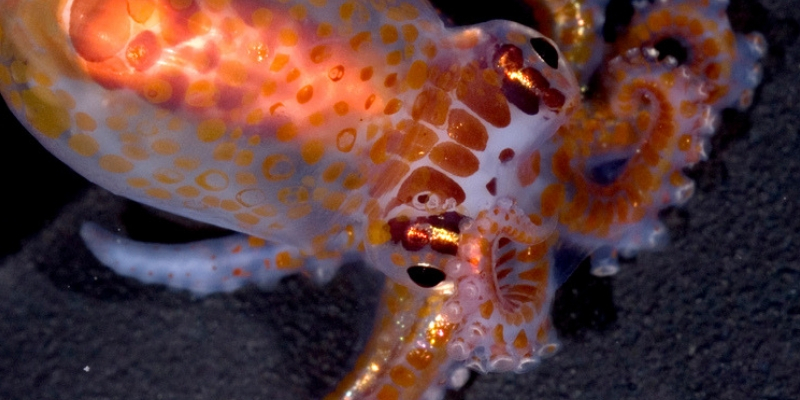
It is estimated that the wolfi octopus spends between three to six months in the paralarval stage. This represents over half of its natural life expectancy in many cases.
What is the paralarval stage? Consider it the “teen” years for cephalopods. Imagine spending over half your life as a teenager.
The paralarval stage is unique to cephalopods. This covers the period from when a hatchling emerges from an egg to the moment in time when it can settle into the habitat associated for adults of its species. During this stage, they live among the plankton close to the surface.
They are not in a larval stage. They are essentially miniaturized versions of adults. They do not have to go through a metamorphic phase to become adults. It is simply that their size and food source requires them to maintain a near-surface existence until they develop enough body mass to survive in what will become their normal habitat.
In the case of the wolfi ocotpus, the fact that full-grown means one-inch in length, it is easy to see why their paralarval stage is so extended. Even though the rate of their parlarval growth and mass accumulation is equal to other octopus species, their starting point is so small that they need all that time to reach a viable size for their normal habitat.
Once they reach approximately one-quarter inch in length, they officially exit the paralarval stage. This is when they begin to function as adults in their shallow-water habitat. Varying types of plankton stop being the mainstay of their diet and they start hunting for small crustaceans and mollusks.
Marine biologists estimate that less than ten percent of wolfi ocotpus paralarva make it to the adult stage. This survival rate is on par with other octopus species and cephalopods in general.
—Wolfi Octopus Reproduction—

—Life Expectancy—
The life expectancy of a wolfi octopus is between six to 18 months.
—Wolfi Octopus Eyesight—
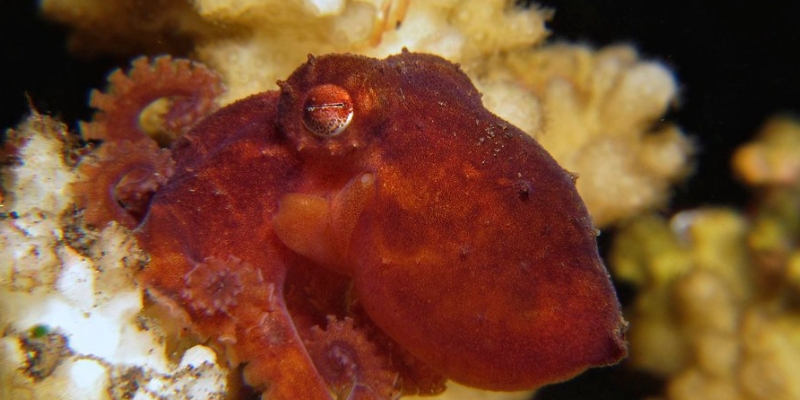
Like other shallow-water species of octopus, the wolfi octopus is considered to have very good eyesight. This helps it to find prey and also to keep a watchful eye for potential predators. A very good quality to have when you are only one-inch long.
The eye structure of the wolfi allows it to focus on specific items as well as to maintain visual situational awareness with decent peripheral vision. The wolfi octopus, however, cannot detect differences in coloration. Like other octopuses, it is essentially color blind.
This type of vision is quite effective when light levels in the water are low. In other words, it is very useful at night. Since the wolfi octopus prefers a nocturnal lifestyle, it can take advantage of its vision properties at all times of the day or night.
—Papillae on Suckers—
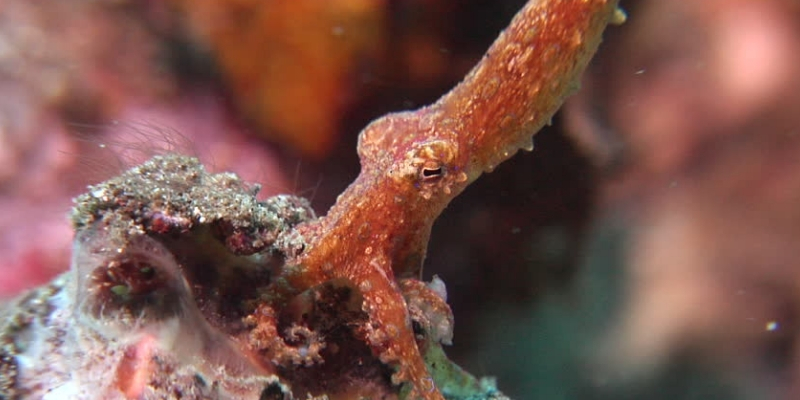
The wolfi octopus has papillae structures on some of its suckers. Papillae are small projections. Think along the lines of the papillae on our tongues —those small bumps on the surface of our tongues.
The presence of these papillae for the wolfi octopus serves to provide it with added surface area when using its suckers. This can provide it with added strength in holding on to things, such as prey, or to secure itself in the event of sudden strong water currents.
The papillae also give the wolfi octopus an improved sense of taste on its arms.
Yes, octopuses can taste what they touch. By having papillae on some of its suckers, it can increase the number of sensory endings that are exposed to what it touches. As such, the more accurately it can “taste” what it touches, the better it can determine what it is and what to do with it.
The wolfi octopus is not the only shallow-water octopus to have this feature. Other small octopus species throughout the world also have similar structures on their suckers.
—In Summary: Good Things Come in Small Packages—
As the smallest octopus species, the wolfi octopus has a unique position in the world of octopuses.
While being very small and having a short lifespan, the wolfi octopus still leaves a huge imprint in terms of its impact on the study of cephalopods. The potential tie to nanoplankton seasonal variations and its breeding cycle, the ability to produce multiple broods by a single female, the presence of papillae on its suckers… have all served to spark deeper study by marine biologists.
In the process, a deeper level of understanding about this species and cephalopods, in general, has emerged. For a tiny creature, its influence has been really strong.





